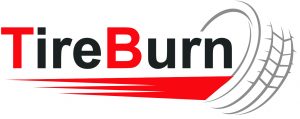A chain rear-end accident, more commonly known as a multiple car pileup, can be a complicated mess to unravel the details about, including determining fault, assigning liability, and ultimately determining who you will be seeking compensation from for your injuries and damages associated with the accident. Any time that you need to deal with the followup to a car crash is frustrating, but these types of car accidents are particularly complicated, and are best sorted out with the help of an experienced attorney who can handle the legwork while you are focusing on your recovery.

While the best advice we can offer is to hire an attorney as soon as possible, the following is some information that we have provided to help you understand the best way to prove who is at fault for the accident, and therefore who is liable for your damages from the crash.
In order to get the money that you deserve, you will need to establish fault for the accident so that you can prove, without a doubt, whose insurance company you will file a claim with, and will not be met with resistance by the insurance company because of uncertainty.
Read below for some tips on how to determine who is to blame for your chain rear-end collision so that you can seek the money that you deserve without additional issues.
Determining Fault After a Chain Rear-End Accident
When there are multiple vehicles involved in an accident, it can require a lot of collaboration to determine what actually happened. Typically, though, at least a portion of the blame will be on the car in the rear, since they hit the car in front of them and the expectation is that they should have stopped.
In this sense, each individual point of contact between vehicles will be considered a separate accident, meaning that if you are the middle car, you will be at least partially at fault for rear-ending the vehicle in front, and you will be the victim in the accident between you and the car that rear-ended you.
However, this is an overly-simplified view of how rear-end accidents are resolved, and the reality is that it is nearly impossible to determine fault without looking at the specifics of the accident.
Each person involved in the accident will have their own perspective and idea of what happened, and any eyewitnesses, traffic cameras, or surveillance tapes from the area will all help to inform fault even more.
Hiring an Attorney Is Your Best Bet
After any accident, one fo the first things that you should do (after taking care of your injuries, of course) is to hire an attorney. This is especially important when you will be dealing with multiple insurance claims with multiple drivers, some claims where you are the victim, and some claims where you are at fault.
An attorney will be able to take all of these claims in stride, but while you are trying to get a handle on your injuries and get your life back on track, the process can be extremely overwhelming.
As we mentioned already, trying to unravel the complexities of these types of accidents on your own can be extremely overwhelming and complicated, but there really is no easy way to provide you with a step-by-step guide to determining fault without being able to look at the unique accident.
The sooner you hire an attorney, the sooner you will be able to get the support that you need to get the money you deserve.




